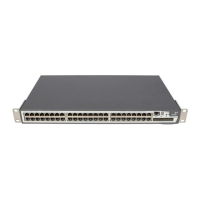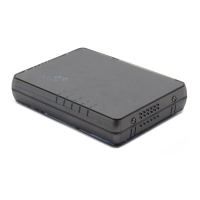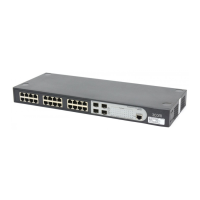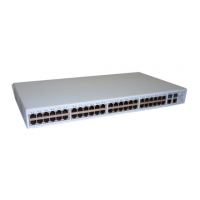1-18
8) Configuring UDP test on remote-ping client
Follow these steps to configure UDP test on remote-ping client:
To do… Use the command… Remarks
Enter system view
system-view
—
Enable the
remote-ping client
function
remote-ping-agent enable
Required
By default, the remote-ping client function
is disabled.
Create a remote-ping
test group and enter
its view
remote-ping
administrator-name
operation- tag
Required
By default, no test group is configured.
Configure the
destination address
destination-ip ip-address
Required
This IP address and the one configured on
the remote-ping server for listening service
must be the same.
By default, no destination address is
configured.
Configure the
destination port
destination-port
port-number
z Required in a Udpprivate test
z A Udppublic test is a UDP connection
test on port 7. Use the
remote-ping-server udpecho ip-address
7 command on the server to configure
the listening service port; otherwise the
test will fail. No port number needs to be
configured on the client; any destination
port number configured on the client will
not take effect.
z By default, no destination port number is
configured.
Configure the source
IP address
source-ip ip-address
Optional
By default, no source IP address is
configured.
Configure the source
port
source-port port-number
Optional
By default, no source port is specified.
Configure the test
type
test-type { udpprivate |
udppublic }
Required
By default, the test type is ICMP.
Configure the number
of probes per test
count times
Optional
By default, one probe is made per test.
Configure the
maximum number of
history records that
can be saved
history-records number
Optional
By default, the maximum number is 50.
Configure the data
packet size
datasize size
Optional
By default, the data packet size is 100
bytes.
Configure a stuffing
character string
datafill string
Optional
By default, the numbers between 0 and 255
are stuffed into datagrams in a cyclically
way.

